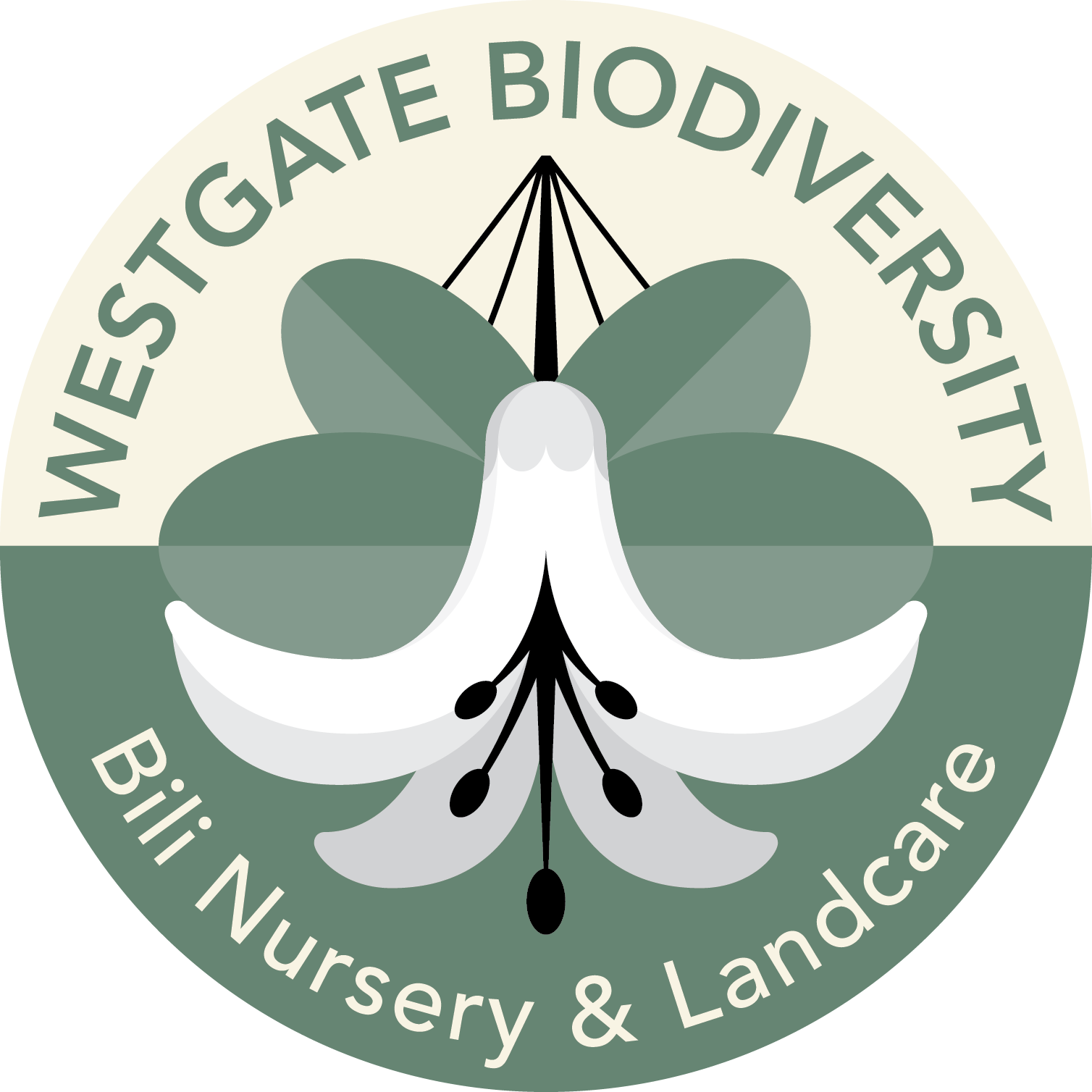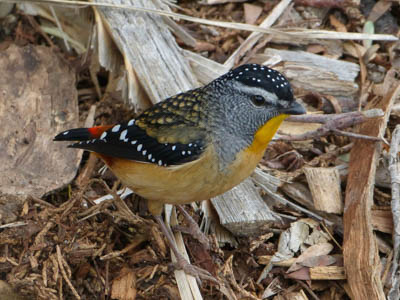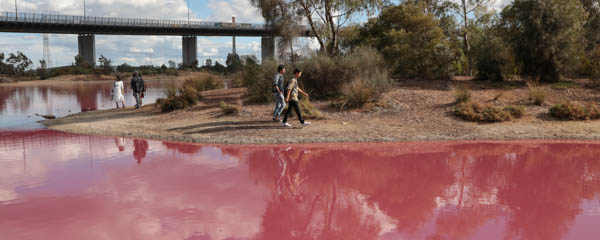Fungi Foray
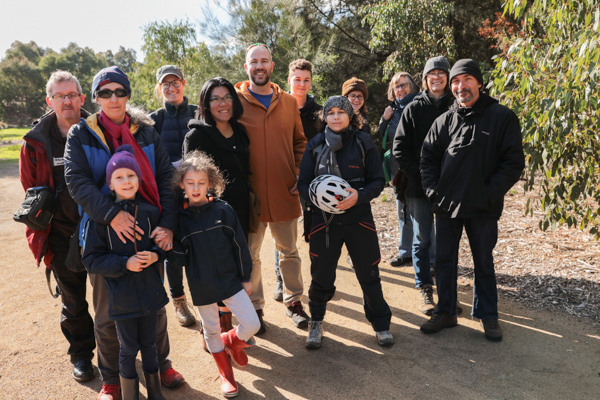
Sunday June 30 was a productive morning with 20 species in all recorded in one small section along Woodland Walk in Westgate Park. This was a good result given the fact that for the previous week the weather had been warm, windy and dry – not ideal conditions for seeing sporing fungi.
The four children in the team proved to be especially good and enthusiastic spotters and they found two Oudemansiella gigaspora – Rooting Shanks with their very tall and slender stems (or stipes). These fungi have white spores and their stipe is unusual in that it extends deep into the soil to buried wood. They are not often seen in the Park so this was a great find.

Oudemansiella gigaspora – Rooting Shank, photos by Lucia 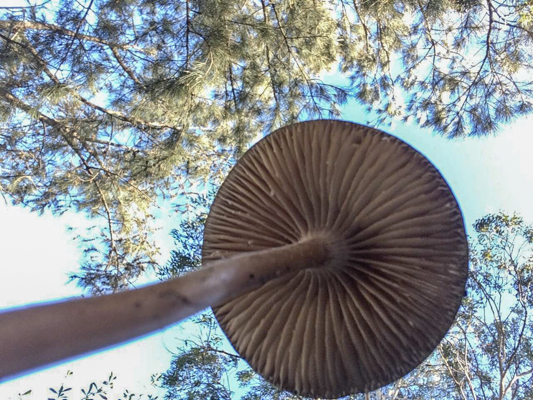
Here are some of the other species we saw:
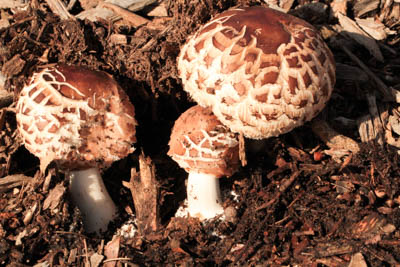
Chlorophyllum brunneum 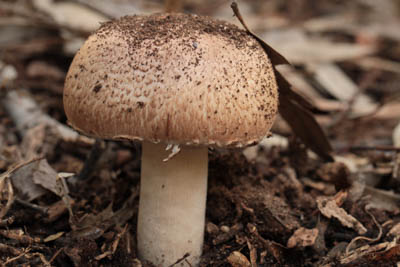
Agaricus sp. 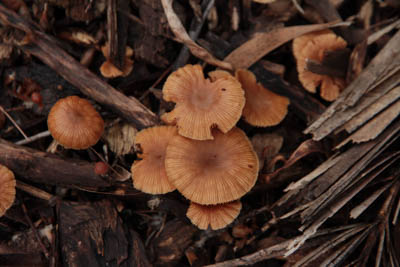
Gymnopus 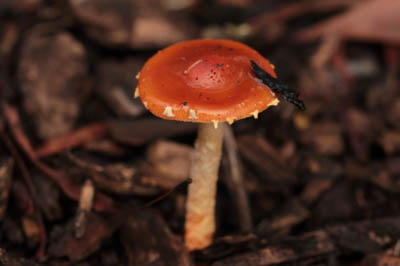
Leratiomyces ceres – Redlead Roundhead 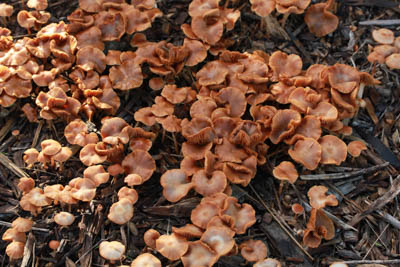
Tubaria furfuracea – Scurfy Twiglet 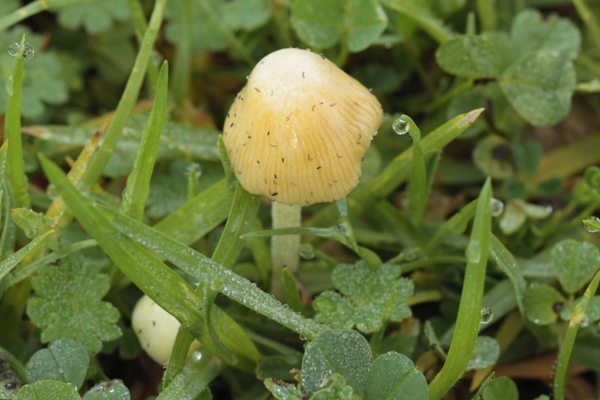
Bolbitius titubans – Egg-yolk Fieldcap
… and below is the full list of foray sightings which will be submitted to iNaturalist for verification and forwarded to the Atlas of Living Australia for mapping.
- Agaricus sp.
- Agaricus xanthodermus – Yellow Stainer
- Bolbitius titubans – Egg-yolk Fieldcap
- Chlorophyllum brunneum – Shaggy Parasol
- Gymnopilus junonuis – Spectacular Rustgill
- Gymnopus sp.
- Leratiomyces ceres, Redlead Roundhead
- Mycena sp.
- Oudmansiella gigaspora – Rooting Shank
- Parasola conopilus
- Pholiota comunis
- Resupinatus sp.
- Tubaria furfuracea – Scurfy Twiglet
- Chondrostereum purpureum
- Pycnoporus coccineus – Red Bracket
- Geastrum triplex – Earthstar
- Geastrum pectinatum – Beaked Earthstar
- Cyathus stercoreus – Bird’s Nest
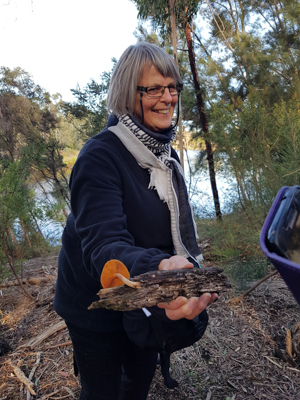
Thanks Anna for this pic of me with a Spectacular Rustgill.
June 2019 bird survey
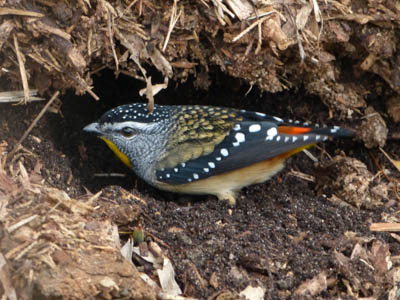
Vegetation recovering after recent rain provides good habitat for a range of birds, including numerous Superb Fairy-wrens and the usual honeyeater species.
Water quality in the Large Freshwater Lake appears very good – most water birds were observed there. In contrast, the Southern Wetlands (Chain of Ponds), despite similar quality water at mid levels, attracts few birds. Moreover, the Saltwater Lake, now a deep brown, had just three Black-fronted Dotterels.
Interestingly, we recorded many more Spotted Pardalotes than usual, mostly being driven off by resident honeyeaters.
Spotted Pardalote, photos Andrew McCutcheon
Correa alba – White Correa
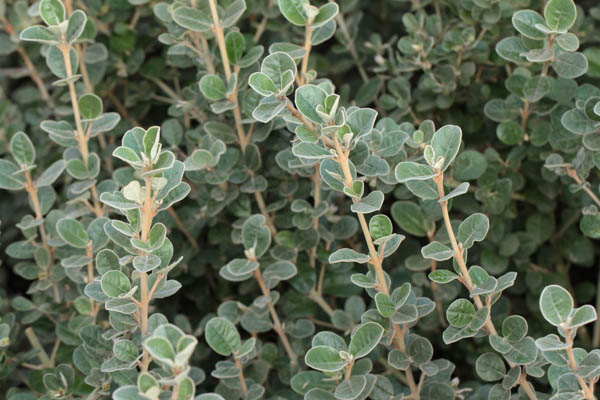
Winter for many native plants is a time for recovery; recovery from hot, dry periods and a time to settle in and make the most of the impending rain. This stasis-like mode allows many plants to burst into growth and flower when the spring warmth and light comes. This normally means lots of winter greenery and not many flowers.
One plant genus that flowers through the winter is the Correa family. Their pale green, red and white petals are lovely beacons of colour through winter.
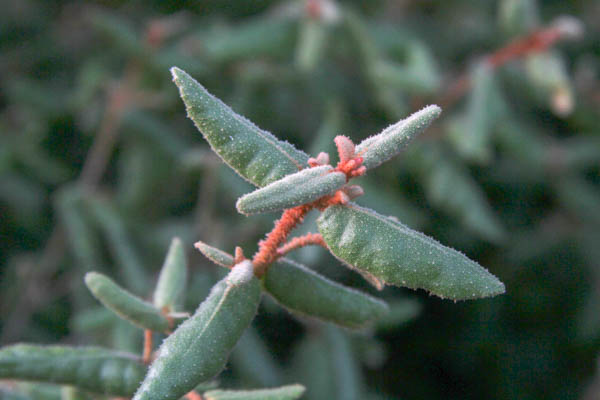
Correa reflexa 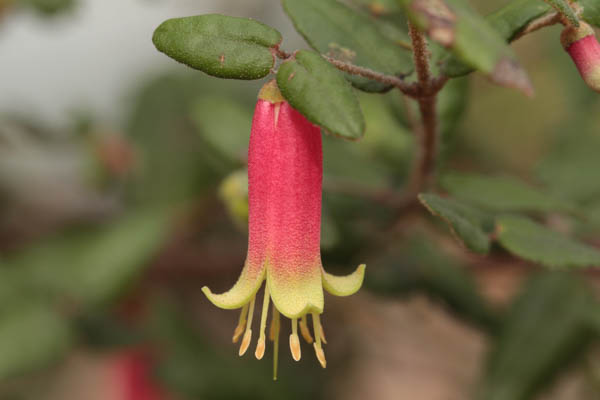
Correa reflexa 
Correa reflexa 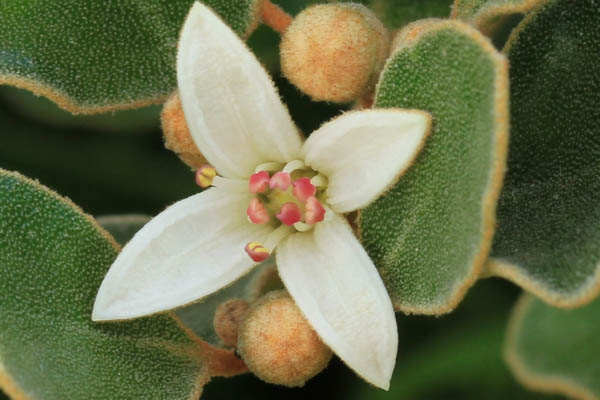
Correa alba 
Correa alba
Correa alba is a coastal plant with matte green leaves with white and hairy undersides. The flower is star shape and white, flowering from now right through winter to spring. The star shaped flower is one sign it belongs to the Rutaceae family (oranges and lemons). We love it so much that we made it our logo!
This Correa can grow on the coastal front (not minding seaspray). Full sun and a bit of water in the depths of summer will see it grow to up to 2m, however they can be trimmed at almost any height to form a hedge.
Correa alba was also used as a tea substitute that supposedly tastes like Earl Grey. And provides vital food for insects and birds when not much else is flowering. It is one of two local correas – the other being Correa reflexa – and both are available for sale in small quantities at our nursery.
Pink lake explained
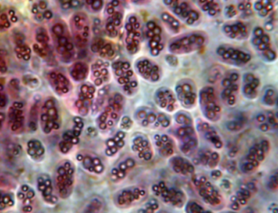

Salt Lake at Westgate Park 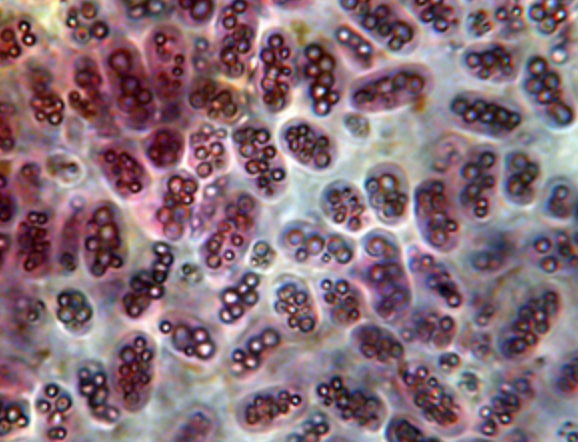
Purple sulphur bacteria cells
The pinkness has gone now, no doubt because of cooler weather, recent rain and less sunshine, but it was certainly spectacular while it lasted.
We now understand, thanks to sampling by freshwater ecologist, Joan Powling, that this explosion of colour was made by a purple sulphur bacteria, probably Chromatium species, the cells of which are packed with sulphur granules.
Purple sulphur bacteria are natural photosynthetic microorganisms. They produce their own food through photosynthesis, can reduce environmentally harmful organic compounds, lower methane gases and fix carbon and nitrogen.
They are found in anoxic aquatic habitats where hydrogen sulphide accumulates.
See here and here for more about purple sulphur bacteria on Wikipedia.
The aquatic plant we see each year in the Freshwater Lake was identified as the macrophyte Ruppia sp., a native perennial found in lakes of elevated salinity. It is an important food source for waterfowl and it does appear to be consumed by Black Swans.
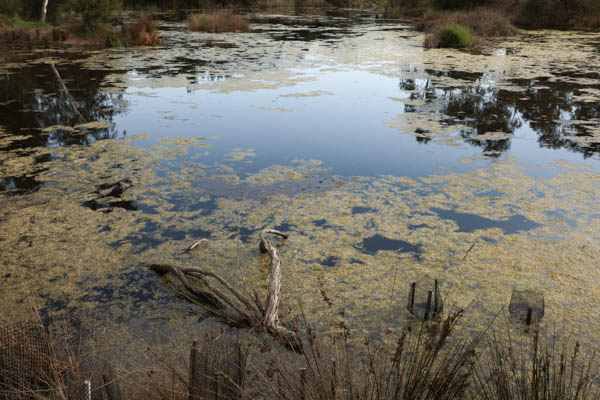
Freshwater Lake
Bili Nursery working bees

We would love to have you join our Bili Nursery team on any of the first Saturdays of each month from now until the end of the year.
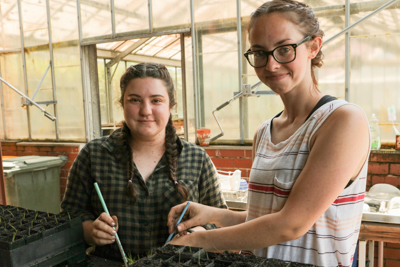
We will be cleaning, sorting, propagating and consolidating our stock of locally native plants.
Our aims are to:
- increase the plants available for retail
- prepare for the City of Melbourne Gardens for Wildlife project
- improve local biodiversity
It’s also a great opportunity to learn more about the 200 or so plants we grow, their propagation and care.
Getting there: Bili Nursery is at 525 Williamstown Road, Port Melbourne (next to Port Melbourne Football oval and not far from the corner of Ingles Street and the North Port Light Rail station.)
I'm interested in being part of Bili Nursery working bees
Please fill out the form so we know to expect you and for more information email us at bilinursery@westgatebiodiversity.org.au or call 9645 2477.
May 2019 bird survey
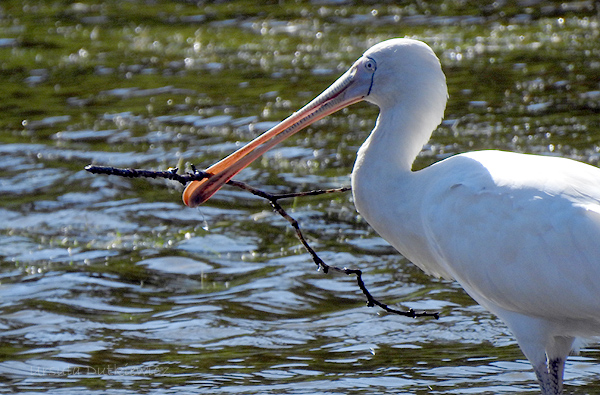
On the survey date drought was still biting at Westgate Park, which received very little rain in late April and early May. All lakes were very low, with exposed mud connecting the freshwater lake’s islands, and the freshwater dam almost completely dry. However, freshwater wetlands near the compound, along the HWT fence and in the new chain of ponds beyond the bridge still contained reasonable quality water. The salt lake had an intense pink algal bloom on the survey date, with algal blooms still developing in some smaller salt lakes.
(In late May, the situation is slightly better after very recent light rains, but the pink colouration is dissipating.)
Drought has also claimed numerous trees and shrubs, including some large eucalypts and banksias. Unfortunately, the many visitors strolling around the pink lake create unofficial paths, trample vegetation such as saltbush and discourage waterbirds and shore birds.
Interesting/notable sightings included an Australian Hobby high up a Todd Road communications tower, a fairly rare visitor. White-naped Honeyeaters are unusual – although just one bird was sighted along the HWT fence, as the species is sociable there were probably more around. Painted Button-quail platelets (leaf litter brushed away in circular patterns when the birds seek food) were reported from the park’s south-eastern corner. Both Royal and Yellow-billed Spoonbills were sighted in April – see photos below by Ursula Dutkiewicz. Four Pacific Gulls, including one first-year bird, were seen along the Yarra.
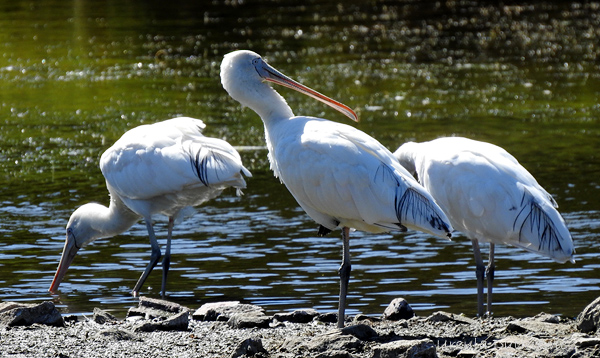
Yellow-billed Spoonbills 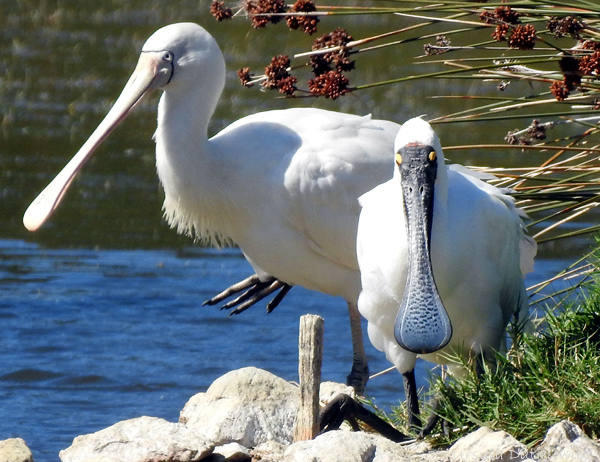
Royal Spoonbill (right) 
Yellow-billed Spoonbill
April 2019 bird survey
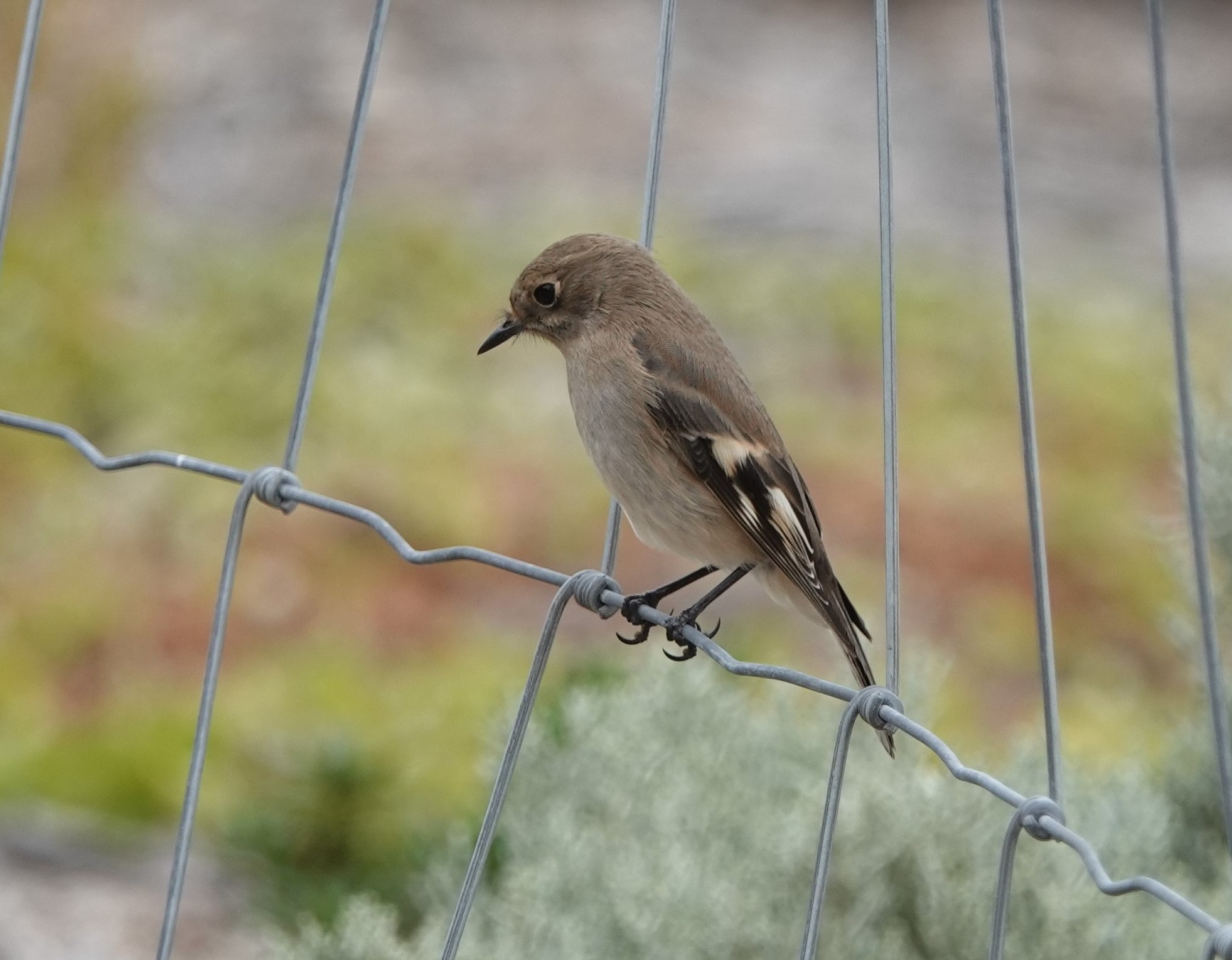
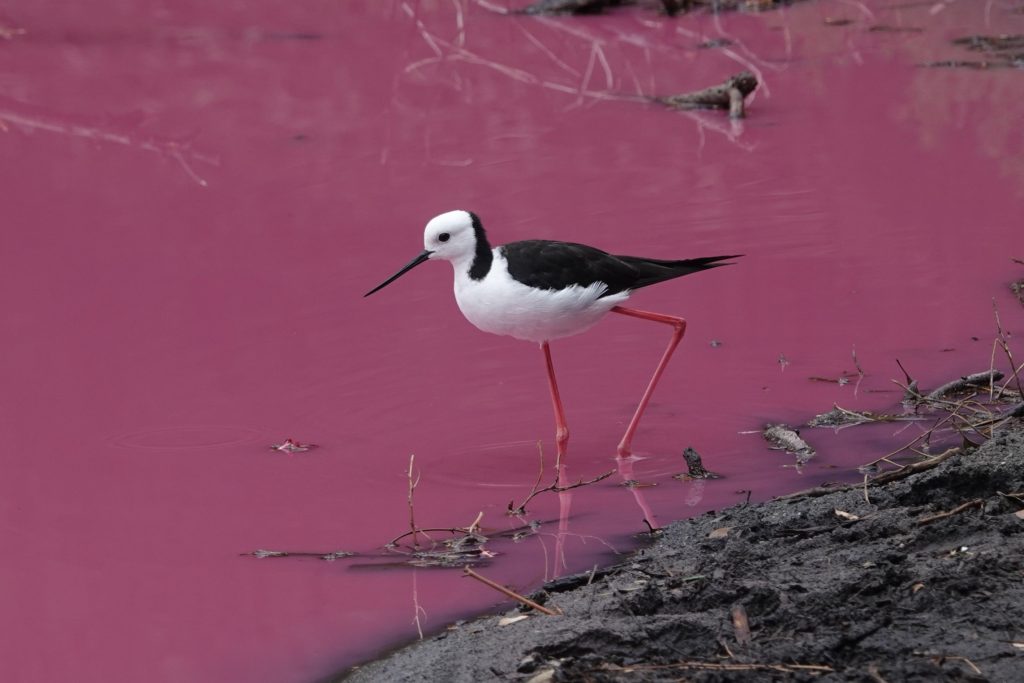
Black-winged Stilt 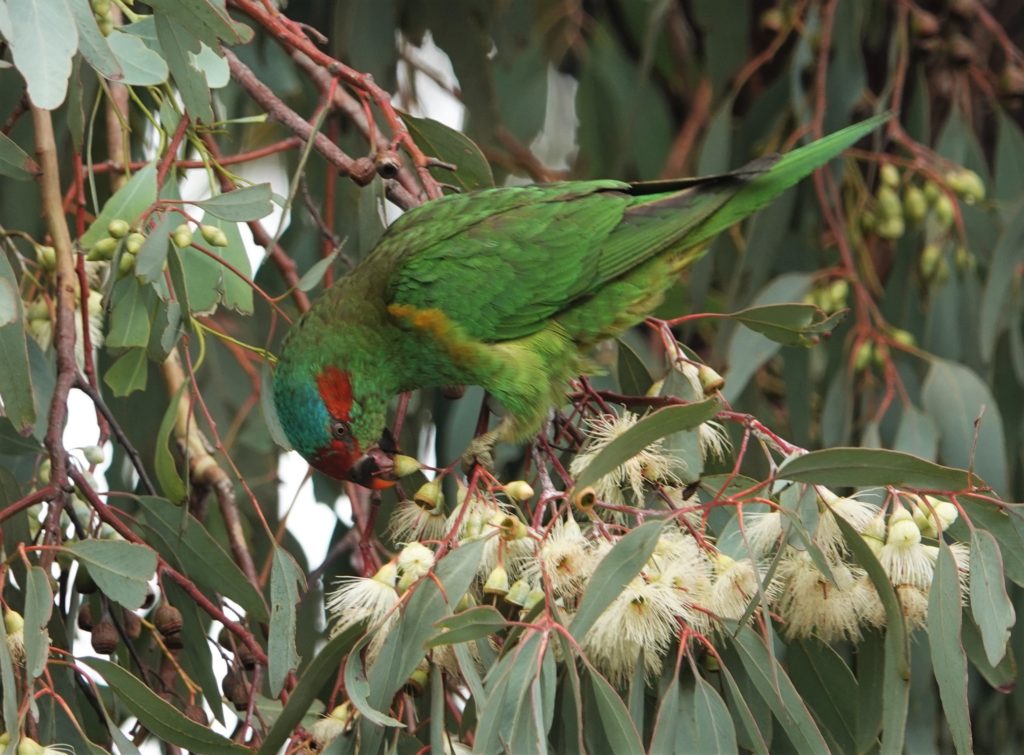
Musk Lorikeet 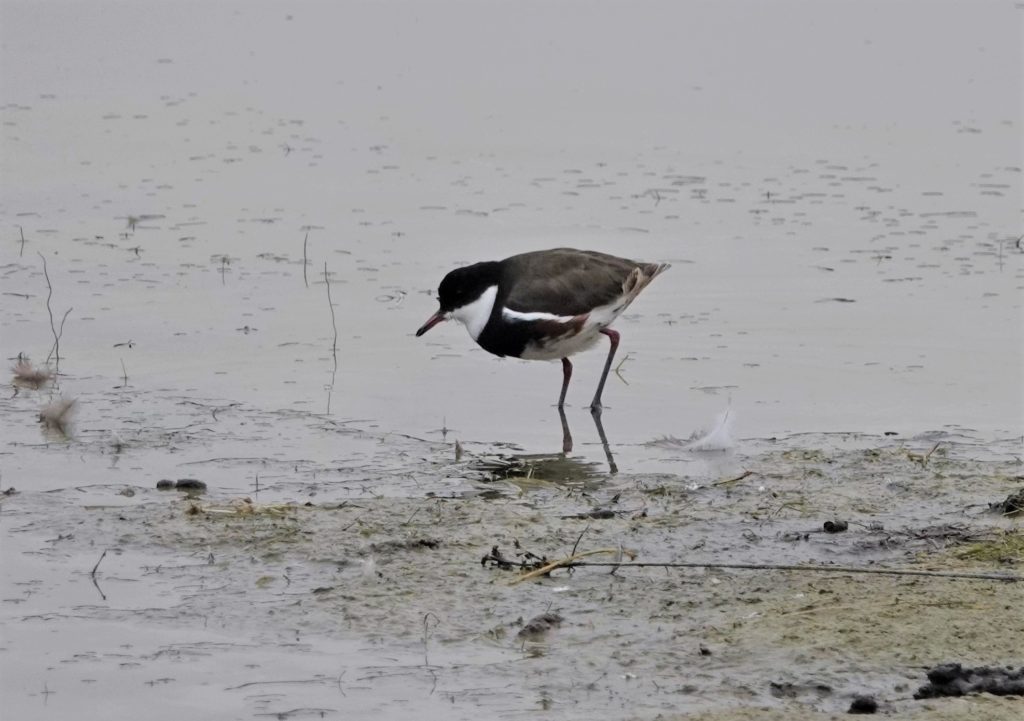
Red-kneed Dotterel 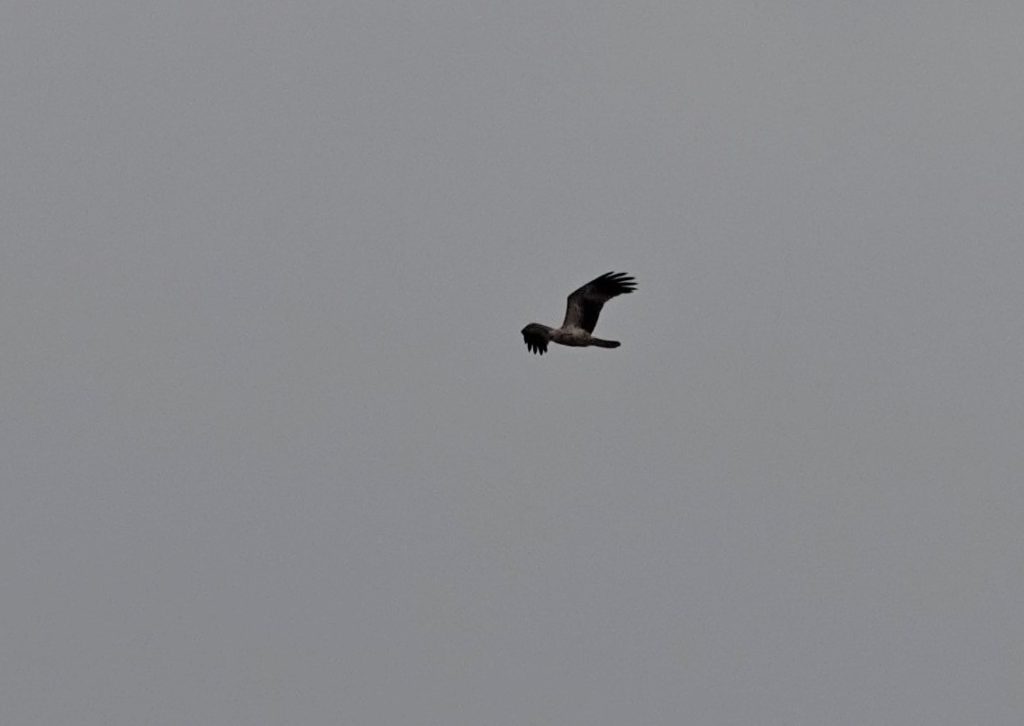
Whistling Kite
After many dry months and just 3 mm of rain in March, Westgate Park is severely stressed, with numerous dead shrubs and trees, especially narrow-leafed peppermints and banksias. Although some eucalypts, including the large Ironbark near the windmill, are flowering, the dry conditions appear to be reducing nectar, as they are drawing very few birds – mostly just Red Wattlebirds. Moreover, we saw only three blue male Superb Fairy-wrens out of 45 birds, indicating almost all males are now in their brown plumage.
Over March the water level in both main lakes dropped significantly, with the land bridge to the main island on the Large Freshwater Lake now exposed. Water quality here appears very good which accounts for the presence there of almost every waterbird recorded in today’s count. Virtually all other water bodies, including the western dam, are completely dry or very low. The Southern Wetlands (chain of ponds) remain an exception, holding water of good quality at mid levels, although not attracting many birds.
The Saltwater Lake is still deep pink with very little bird life on it, just two Black-winged Stilts.
Interesting/notable sightings:
• Two seasonal visitors seen for the first time this year: three Spiny-cheeked Honeyeaters (also heard on 30 March) and two brown Flame Robins along the Yarra River
• Some eucalypts along the Yarra are in flower and luring lots of birds, including Musk and Rainbow Lorikeets and most of the New Holland Honeyeaters encountered
March 2019 bird survey
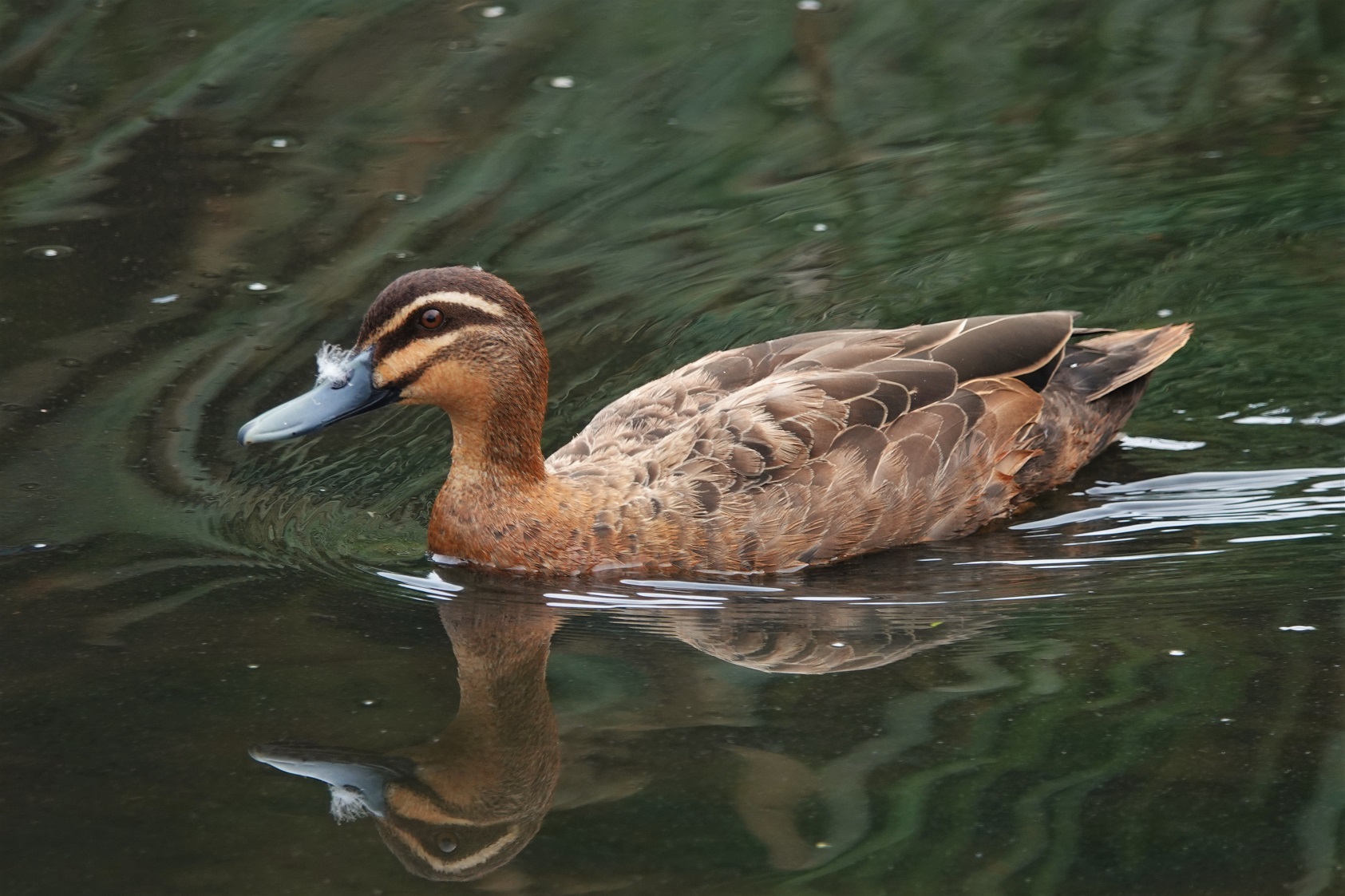
After a long run of extreme heat and almost no rain in January and February park vegetation is stressed, with some shrubs dying. Nevertheless, the survey produced exciting results and 53 species.
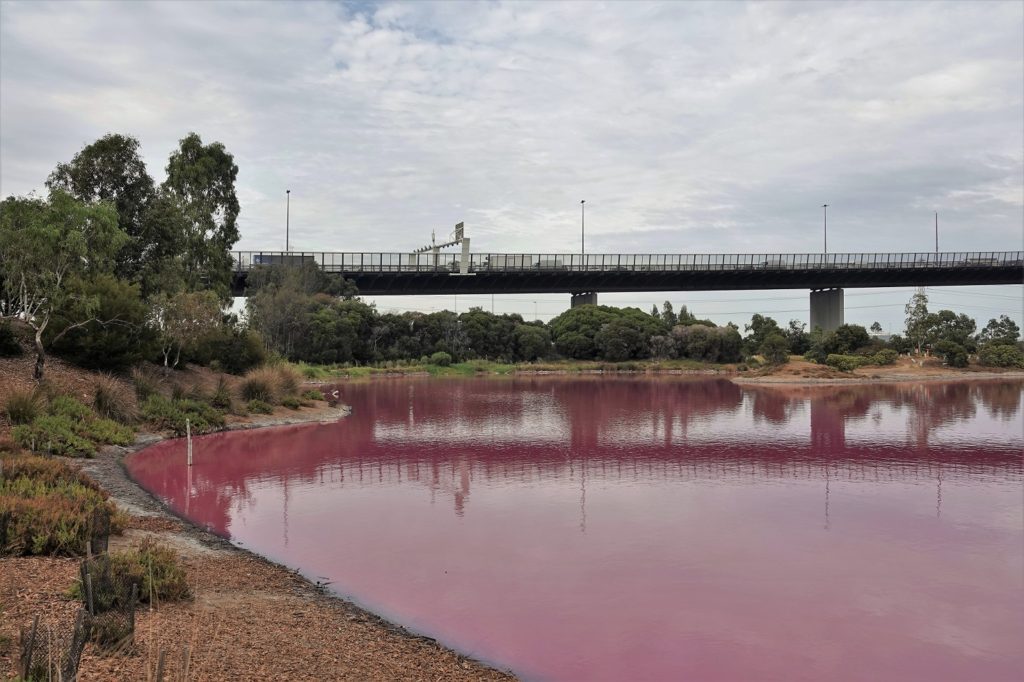
Pink Salt Lake 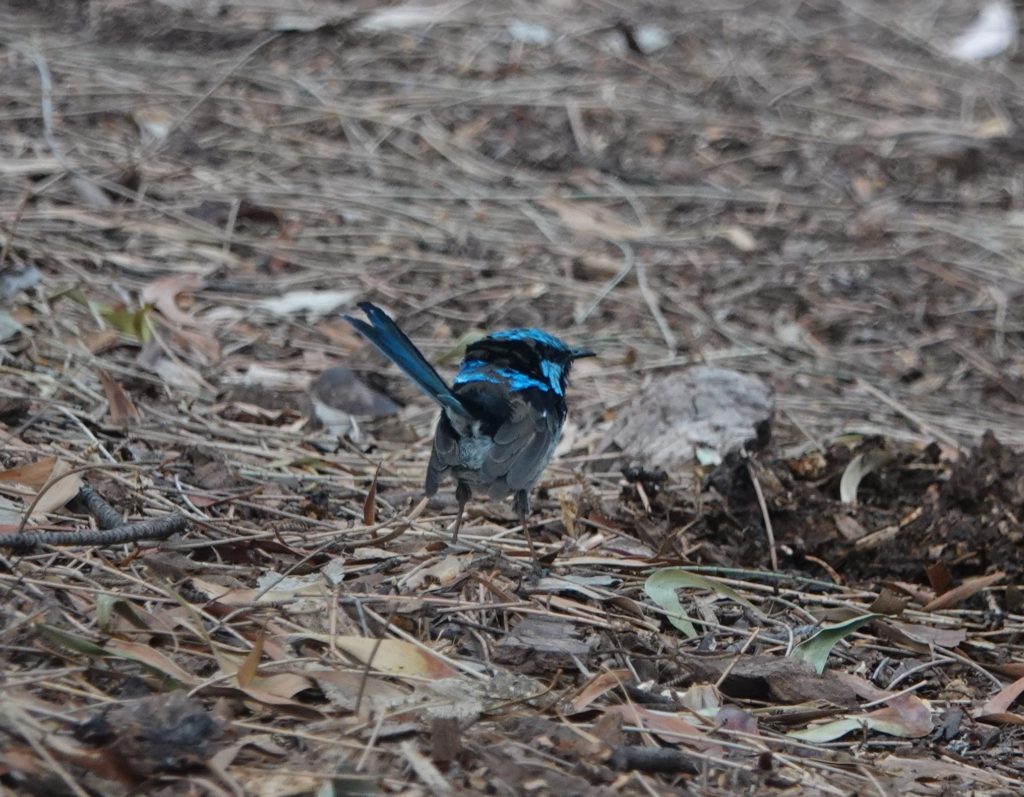
Superb Fairy-wren 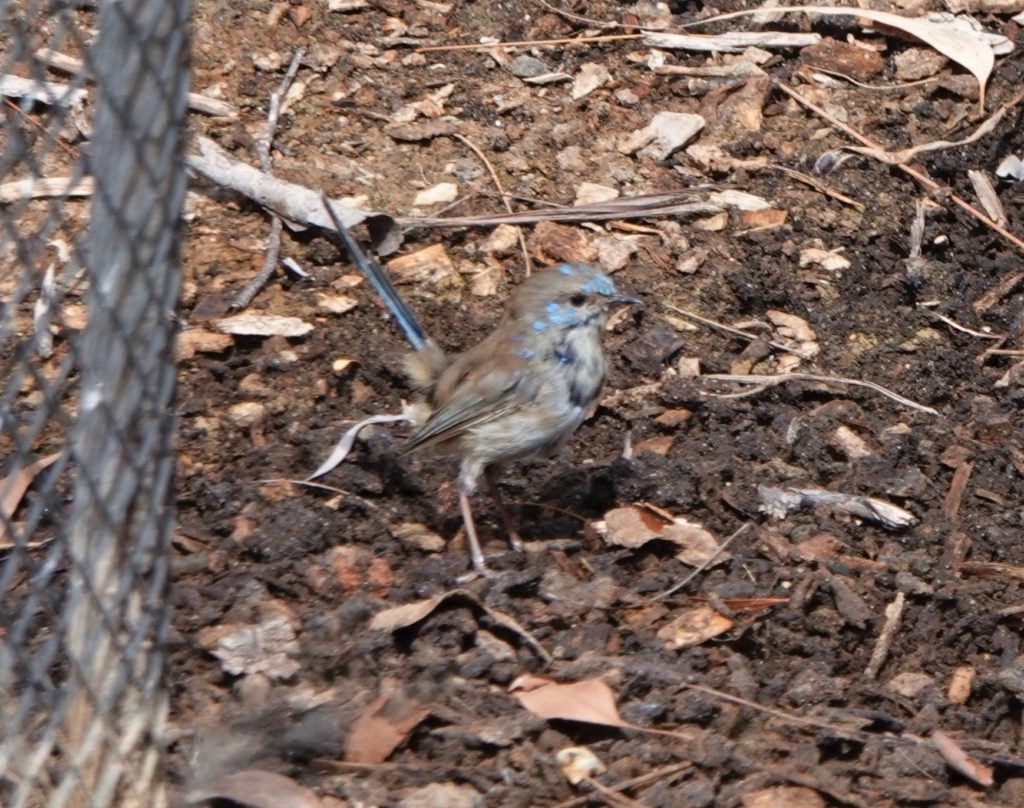
Superb Fairy-wren changing plumage 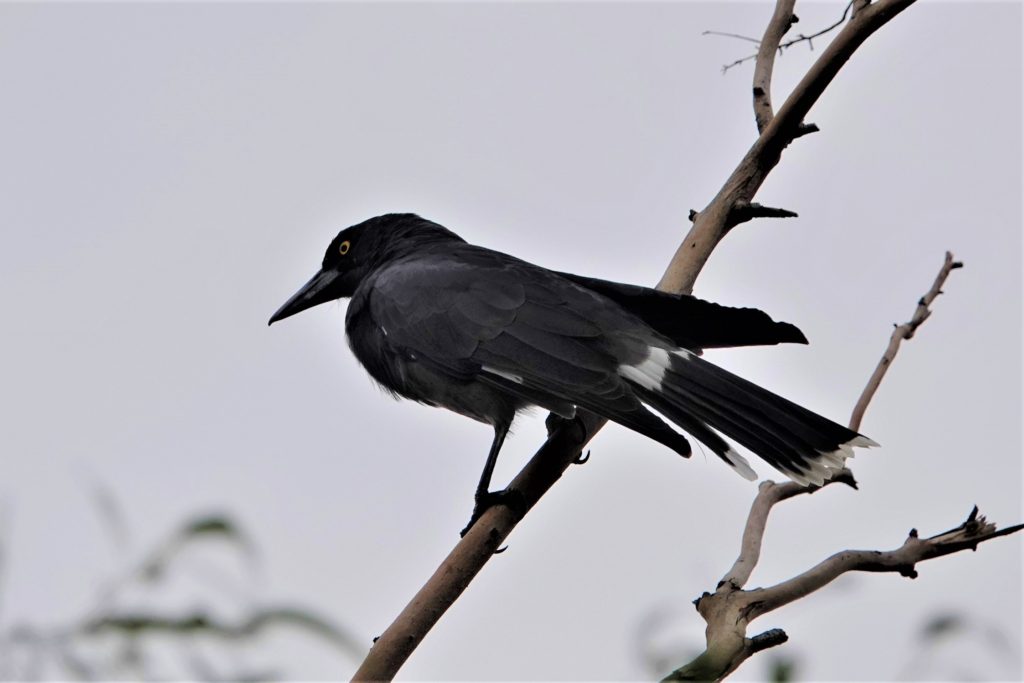
Pied Currawong 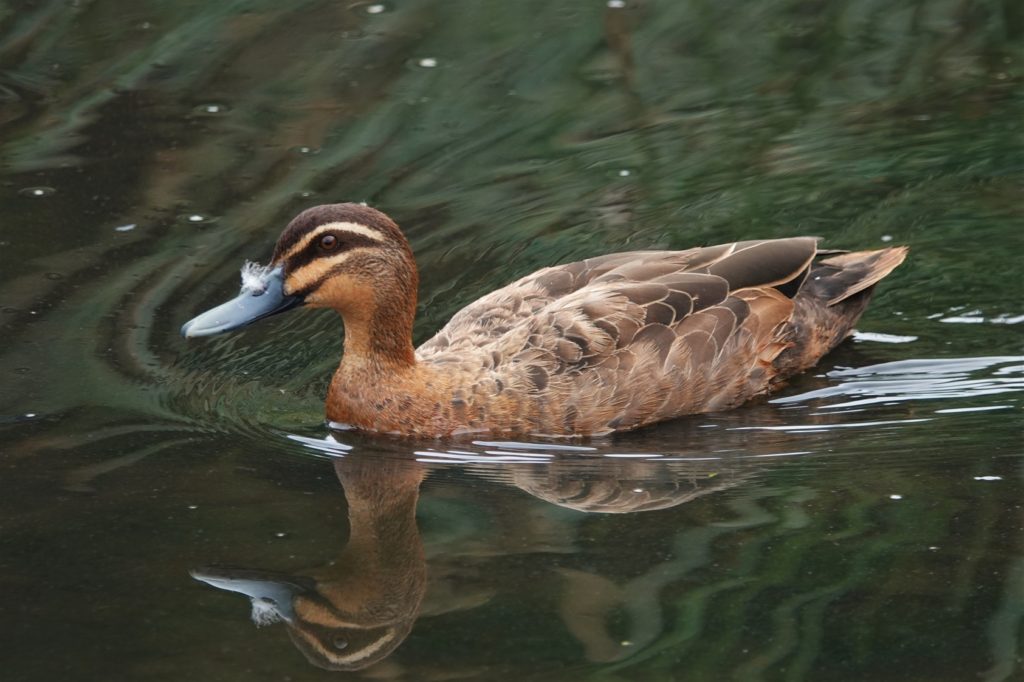
Black Duck.Mallard hybrid 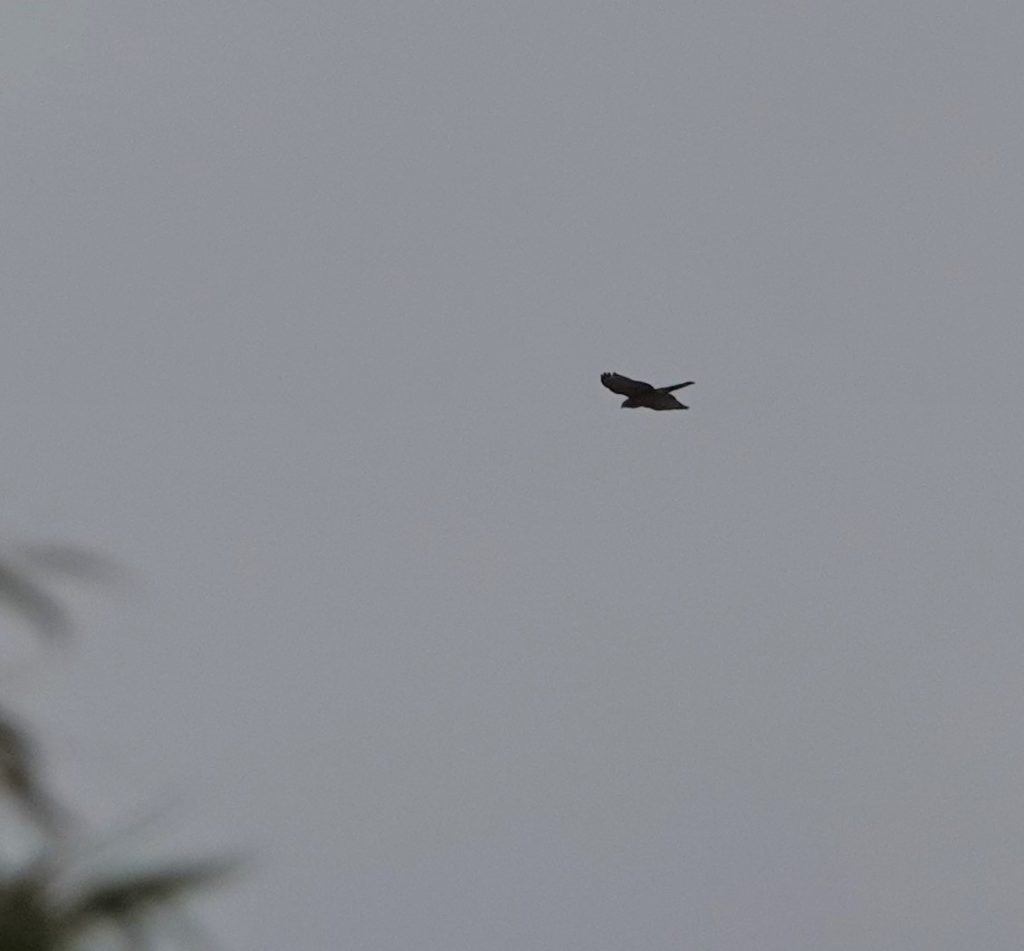
Goshawk
A larger than usual range of land-based bird species observed included a Sacred Kingfisher, Striated Pardalote, Rufous Fantail and Grey Fantails. The very dry conditions in Melbourne and much of Central Victoria are probably encouraging some bird species to move seeking suitable habitat, and others may be starting their seasonal overland migrations early.
Although still plentiful, almost all blue male Superb Fairy-wrens are changing their plumage from blue to brown much earlier than usual, a sign of stress from drought and reduced food supplies. The dry vegetation could also explain a much lower count of White-plumed Honeyeaters than usual.
As observed last month the water levels in the main lakes are high, but almost all other smaller waterbodies, including Railway Dam, are dry or very low. The Southern Wetlands is an exception, holding water of good quality at mid levels.
The Saltwater Lake’s deep pink algal bloom delights overseas tourists. Compared to last month the number and diversity of shorebirds on the lake edge is much reduced with only a few Black-winged Stilts seen this survey. Most of those recorded around this lake last month, including a pair of Red-kneed Dotterels, are now using Large Freshwater Lake.
Interesting/notable sightings: The Eastern Spinebill reported by Samuel Burckhardt on ebird is the park’s first sighting of this species. As woodland areas grow and mature this is one of many bushland bird species, like Brown Thornbills, that may become regular visitors or resident in the park.
4 great workshops
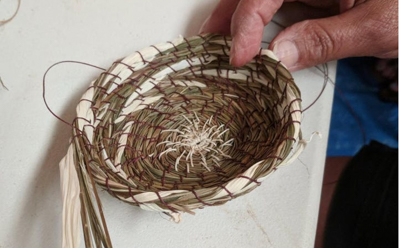
Pollinators & Westgate Park, Summer Citizen Science workshop Sun 10 March 10.30am – 1.30pm
At this workshop, you will learn to identify several insect pollinators, including native and non-native bees and butterflies. We will then visit the pollinator observatories to make observations of plant-insect interactions. This is the seventh (and final!) in this series of workshops. See here for more details and to book. Free.
Native Kokedama Workshop, Sat 30 March 11.30am-1pm, Bili Nursery
Learn how to make a Kokedama (hanging planter) using local native species. Kokedama; a Japanese method of creating a moss-bound ball planter. See here for more details and to book. $40
Native Terrarium Workshop, Sat 13 April, 12-1pm, Bili Nursery
Terrariums are a great way to build your own self contained ecosystem. In this workshop we will be showing you how to build one, maintain it and watch it flourish. We will learn all about sand belt plants and ecosystems, and how that can guide you so you can build your own terrarium. See here for more details and to book. $40
Weaving Workshop With Local Native Fibres, Sat 27 April, 1-4pm, Bili Nursery
Using locally harvested native plants, learn how to create your own coiled basket. The core material is visible and can either be a single plant fibre or mixed fibres. Add a bit of colour with found materials such as fabric scraps and wool. Options for stitching materials include hemp twine, raffia or strong cotton. See here for more details and to book. $65
Bili Nursery open Sat 23 Mar

Bili Nursery (525 Williamstown Road, Port Melb) closes on Saturdays over summer and will be open again for trading from 23 March 2019.
